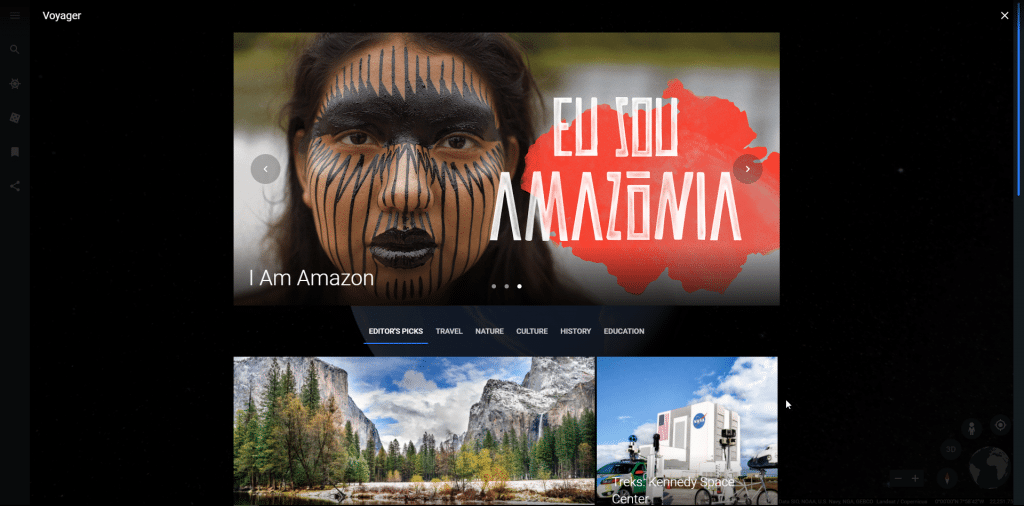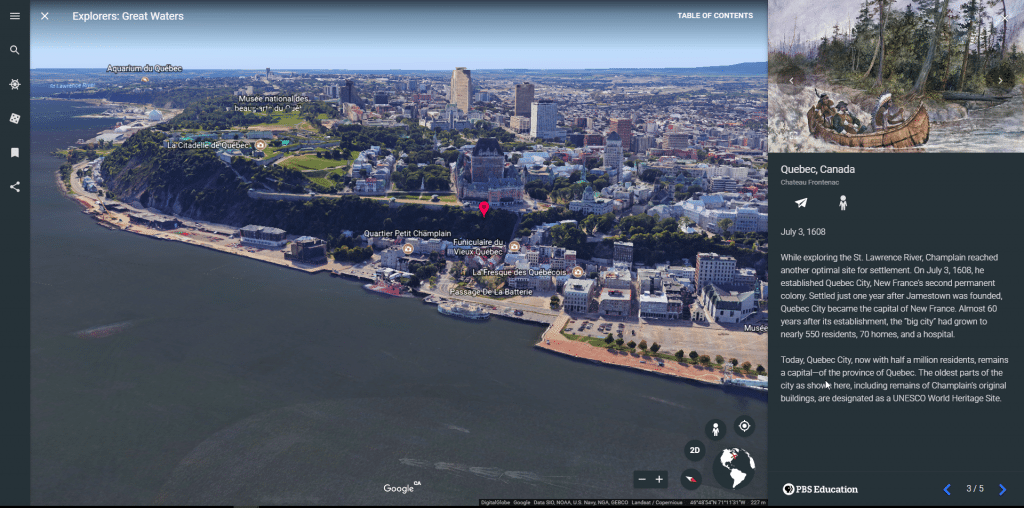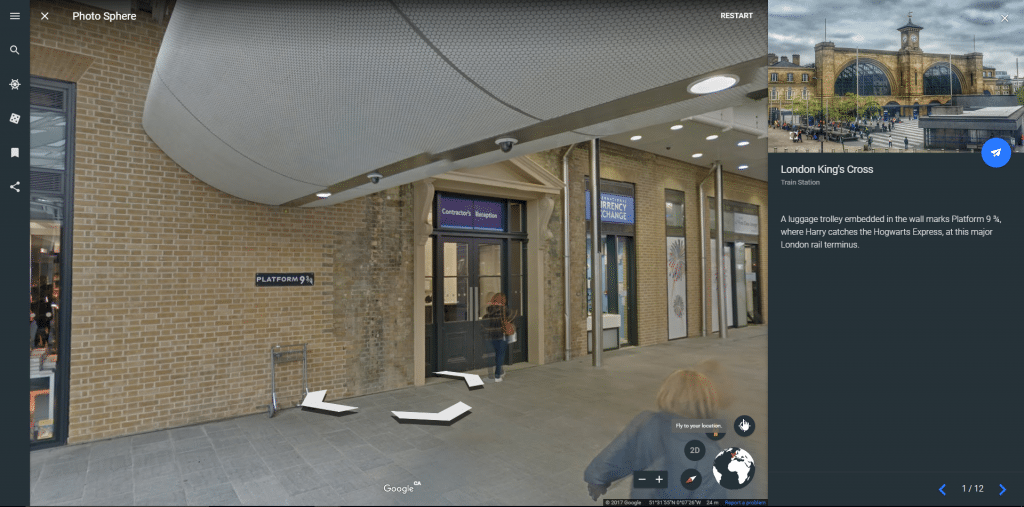UPDATING: June 16, 2019
Last week, Google (Alphabet) announced to the world that users will be able to post their own stories, photos and experiences on Google Earth.
It’s kind of like turning Google Earth into a social network: users can post private or public stories about their world for others to see.
(And, all without advertising revenue. Google Earth Director Rebecca Moore told Reuters, “Google Earth is our gift to the world… and not everything Google does has to make money.”)
It sounds like this will be an extension of the Google Earth Voyager tool which currently lets students visit interactive sites and map-based stories.
Table of Contents:
- Who writes Google Earth Voyager Stories?
- How is Google Earth changing over the next few years?
- How could this be Earth shattering educational technology?
- Doesn’t this classroom technology already exist?
- How will this change the classroom in 2-3 years?
Note: This post was originally typed and published in July 2017. Well, it’s been almost 2 years since the first publication. Let’s see how things have changed! Updates are being made using Dragon, speaking naturally. Look ma, no hands!
Who writes Google Earth Voyager Stories?
Right now, Google Earth voyager story guides are written by Google Earth partners. They tell stories written or curated by professionals about a variety of topics, including…
- A trip to the south pole
- life in the Amazon
- or even great historical explorers (anyone teaching Grade 7 History and Samuel de Champlain in New France?)
Crazy.
Your students can view current content about the world, all from their web browser.
(Well, ok. Google Earth doesn’t have satellite photos of Quebec city in 1608, but you can use streetview to explore modern day Quebec right now.)
How is Google Earth changing over the next 2-3 years?
It sounds like Google Earth is becoming more like a social network, where regular, average, typical people around the world can add posts, stories, videos, photos into the Google Earth framework.
Rebecca Moore, Google Earth’s Director told the crowd in Brazil at the “I am Amazon” launch that soon people could post “the story of your family history, the story of your favorite hiking trip – it could be anything. It doesn’t have to be profound.”
The difference will be that average Joes will be able to post stuff – unedited, uncurated stuff.
And this becomes an incredible teaching resource to bring into the classroom.
How could this be Earth shattering educational technology?
Well, let’s be honest. Lots of teachers base their program around a textbook…
- That the school bought a few years ago…
- Which was already in print for a few years before that…
- With content that was researched just slightly before…
So the idea that you can have a living textbook in the form of Google Earth, with content from everyday people sharing snippets of their life… It’s wikipedia meets global satellite photography on an epic scale.
Textbooks can be great tools. They’re safe, comfortable and easy for teachers to use from one year to the next.
(They’re also familiar for parents and students: read this chapter, answer those questions, use the glossary, and google the answers online when you’re stuck.)
But textbooks also have the danger of providing outdated information, as well as perspectives of the authors.
Hans and Ola Rosling make the argument in their TED Talk about “how not to be ignorant about the world.”
“Teachers tend to teach outdated worldviews, because they learned something when they went to school, and now they describe this world to the students without any bad intentions, and those books, of course, that are printed are outdated in a world that changes. And there is really no practice to keep the teaching material up to date.”
So, imagine a world where we start the conversation with printed textbooks to learn about global warming, fair trade farming, or developed / developing economies…
And then use Google Earth as a tool to find real-life case studies about the world today.
Doesn’t this classroom technology already exist?
A little. Google Earth and Google Maps are already great teaching tools.
- You can see geo tagged photos on google maps to see what websites and users have posted around the area.
- Students can zoom in and see relatively current satellite images about places they are studying.
- You can use Streetview to zoom in and walk along where the Google Streetview camera has driven or trekked. (Heck, people can even upload their own 360 degree streeview images.)
We don’t need to rely on textbooks for our view of the world.
Right now Google Earth Voyager allows students to look at prepared curated content. Students doing a novel study on Harry Potter, could use Google Earth as a virtual textbook to study the Harry Potter world in Britain
How will this change the classroom in 2-3 years?
Students will be able to find Google Earth Voyager content and stories made and produced by everyday citizens.
Even better, in 2-3 years, students will be able to create and publish their own content on Google Earth just like that.
And that could be a game changer.



Hi,
Thanks for sharing these interesting facts about Google Earth.